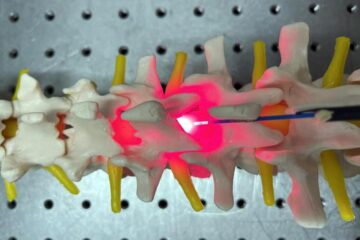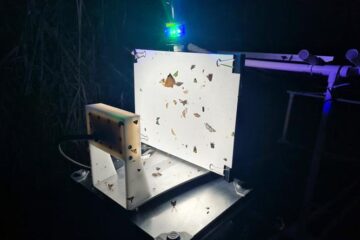Enlisting genomics to understand flu evolution

Multiple strains of the flu virus, circulating in a population at the same time, can reshuffle their genes and create a new virus, one capable of infecting many more people, according to a new study in the open-access journal PLoS Biology. This finding may help scientists make better predictions about which viral strains will attack during upcoming flu seasons and design more effective flu vaccines.
In the first large-scale effort to sequence the flu genome, Edward Holmes, David Lipman, and colleagues examined the genomes of 156 influenza A viruses (serotype H3N2) collected by New York State public health officials between 1999 and 2004. “We found that there are co-circulating minor variants that are not infecting many people,” says Lipman. “One of these can become the next epidemic strain.”
These co-circulating viruses can exchange genes in a way that creates novel, epidemiologically significant strains–a process that can occur when someone is infected simultaneously by more than one strain. The genetic reshuffling demonstrated in this study is the first to examine in detail a reassortment event from a persistently cocirculating minor strain to a previously dominant strain leading to an epidemiologically significant outcome–the emergence of the “Fujian” strain in the 2003-2004 flu season.
The Institute for Genomic Research, with funding from the National Institute for Allergy and Infectious Diseases, sequenced the genomes of the collected flu viruses. Examining these sequences, Holmes et al. found that a relatively uncommon strain of virus contributed its hemagglutinin gene (a highly variable viral protein that must be recognized by the host’s immune defense system) to a virus common during the previous year. The reassorted virus suddenly became capable of infecting thousands. “The key thing here is that the general notion of epidemic flu is that there’s a series of successions by variants of the flu we got the previous year.” But the new study shows that persistently cocirculating minor strains–which might be accumulating mutations with little obvious epidemiological consequences–can suddenly cause an epidemic with just one or two more mutations.
These results suggest that “the potential diversity is greater than we thought,” says Lipman. “We need to have more comprehensive information on the entire genome [and] enough samples from around the world,” he adds, to find the benign virus strain that will become next season’s scourge. The more genomes scientists collect–and the more refined the tools of genomics become–the greater the chances of developing more effective vaccines.
Media Contact
More Information:
http://www.plosbiology.orgAll latest news from the category: Life Sciences and Chemistry
Articles and reports from the Life Sciences and chemistry area deal with applied and basic research into modern biology, chemistry and human medicine.
Valuable information can be found on a range of life sciences fields including bacteriology, biochemistry, bionics, bioinformatics, biophysics, biotechnology, genetics, geobotany, human biology, marine biology, microbiology, molecular biology, cellular biology, zoology, bioinorganic chemistry, microchemistry and environmental chemistry.
Newest articles

Red light therapy for repairing spinal cord injury passes milestone
Patients with spinal cord injury (SCI) could benefit from a future treatment to repair nerve connections using red and near-infrared light. The method, invented by scientists at the University of…

Insect research is revolutionized by technology
New technologies can revolutionise insect research and environmental monitoring. By using DNA, images, sounds and flight patterns analysed by AI, it’s possible to gain new insights into the world of…

X-ray satellite XMM-newton sees ‘space clover’ in a new light
Astronomers have discovered enormous circular radio features of unknown origin around some galaxies. Now, new observations of one dubbed the Cloverleaf suggest it was created by clashing groups of galaxies….





















